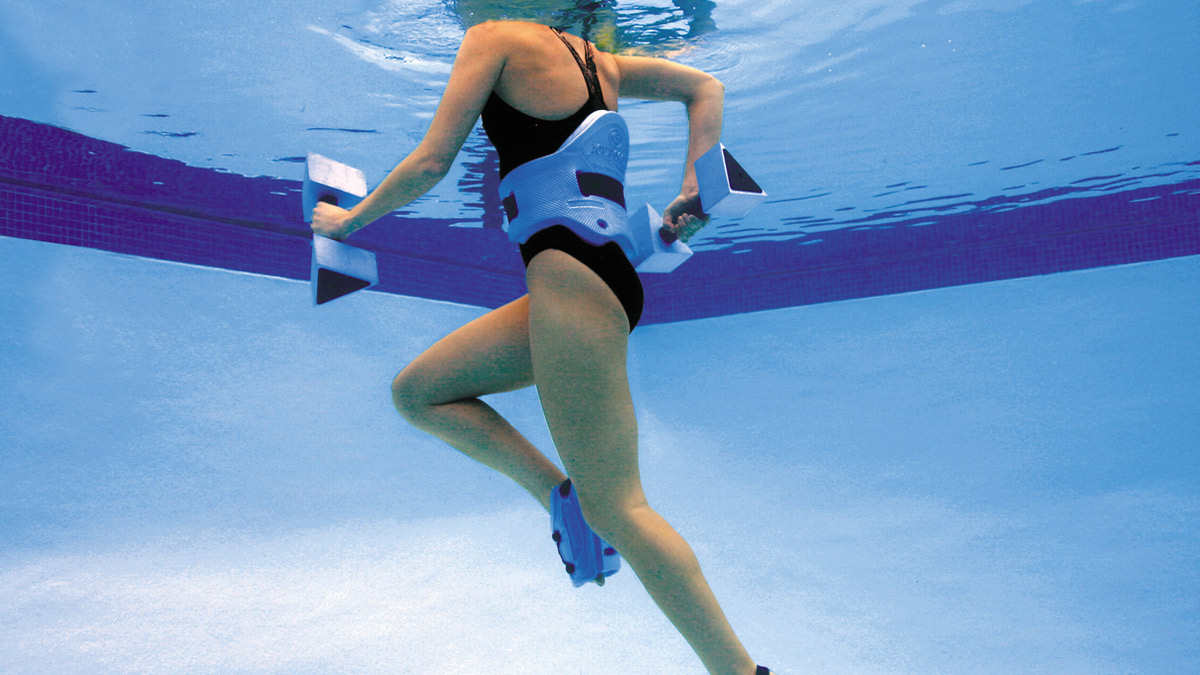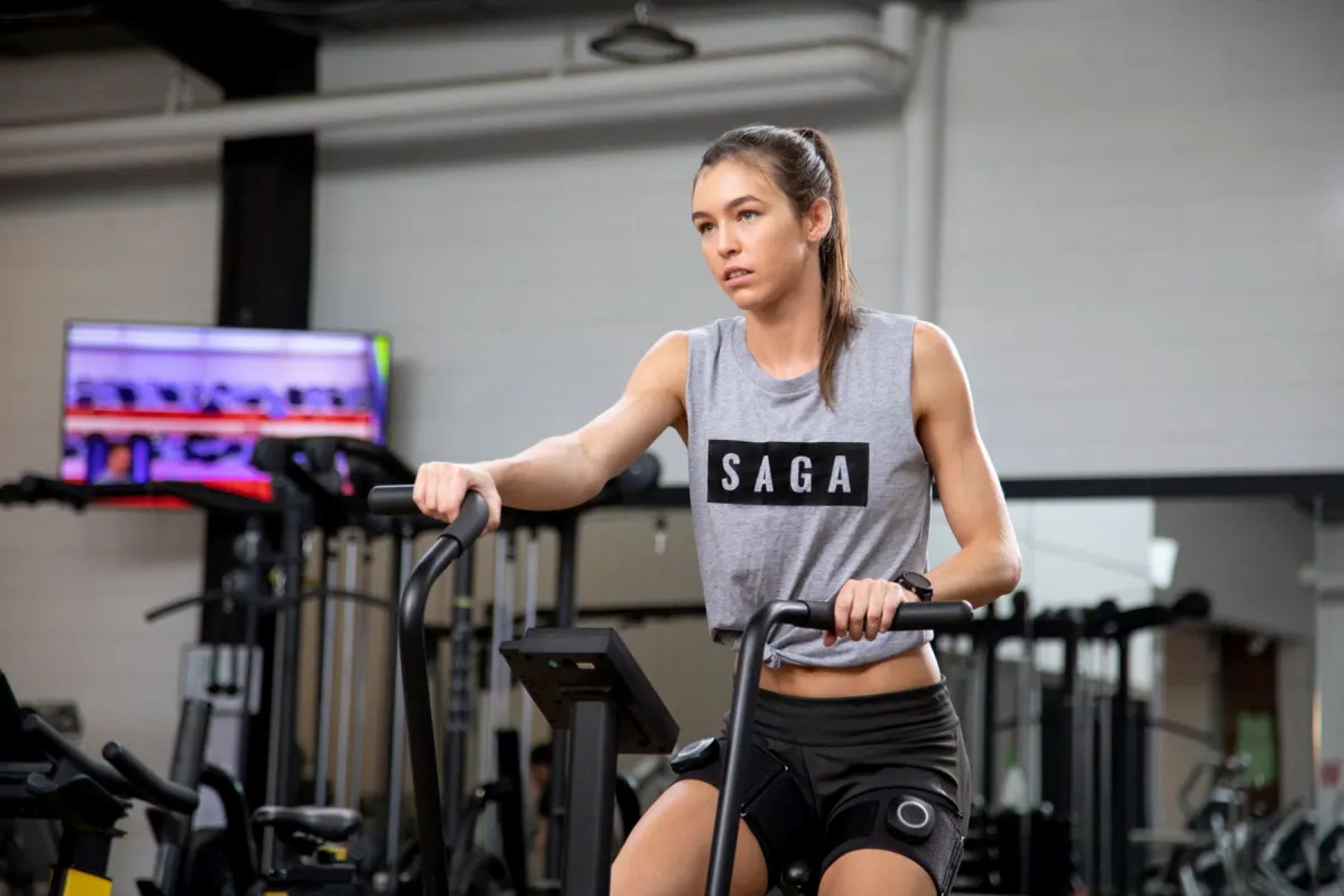Home>Misc>Featured>What Is The Best Fitness Tracker For Someone With High Blood Pressure
Featured
What Is The Best Fitness Tracker For Someone With High Blood Pressure
Modified: January 22, 2024
Looking for the best fitness tracker for someone with high blood pressure? Check out our featured recommendations for monitoring your health and staying active.
Introduction
Welcome to our guide on finding the best fitness tracker for individuals with high blood pressure. Maintaining a healthy lifestyle is essential for managing high blood pressure, also known as hypertension. Regular physical activity has been shown to have numerous benefits on blood pressure levels, including reducing the risk of heart disease and stroke.
A fitness tracker is a valuable tool that can help you monitor your daily physical activity and provide key insights into your overall health and fitness. By tracking your steps, heart rate, and other vital health metrics, a fitness tracker can assist you in identifying patterns and making informed decisions to better manage your high blood pressure.
In this article, we will delve into the importance of fitness in managing high blood pressure and guide you in choosing the right fitness tracker that meets your specific needs. We will also recommend some top fitness trackers that are suitable for individuals with high blood pressure.
Whether you’re a fitness enthusiast or someone looking to improve their overall well-being, this comprehensive guide will provide you with the information you need to make an informed decision. Let’s dive in and discover the best fitness tracker to help you stay on top of your health journey.
Understanding High Blood Pressure
High blood pressure, or hypertension, is a common condition in which the force of blood against the walls of the arteries is consistently too high. It is often referred to as the “silent killer” because it typically has no visible symptoms but can lead to serious health complications if left untreated.
There are two main types of high blood pressure: primary (essential) hypertension and secondary hypertension. Primary hypertension is the most common type and develops gradually over time due to a combination of genetic and lifestyle factors. On the other hand, secondary hypertension is caused by an underlying health condition, such as kidney disease or hormonal disorders.
Various factors contribute to the development of high blood pressure. Some of the most common risk factors include age, family history, a diet high in sodium and low in potassium, obesity, physical inactivity, and chronic stress. It is important to note that anyone, regardless of age or gender, can develop high blood pressure.
When blood pressure remains consistently high, it puts strain on the arteries and organs, such as the heart, kidneys, brain, and eyes. Over time, this can lead to serious health problems, including heart disease, stroke, kidney disease, and vision loss.
Monitoring blood pressure levels is crucial for managing hypertension. Normal blood pressure is typically defined as a reading of 120/80 mmHg. A blood pressure reading is presented as two numbers: the systolic pressure (the top number) represents the pressure in the arteries when the heart beats, while the diastolic pressure (the bottom number) represents the pressure in the arteries when the heart is at rest between beats.
To diagnose high blood pressure, multiple measurements are taken over time. If you consistently have a blood pressure reading of 130/80 mmHg or higher, you may be diagnosed with hypertension. It is important to work with your healthcare provider to monitor and manage your blood pressure regularly.
Now that we have a better understanding of high blood pressure, let’s explore the role of fitness in managing this condition and how a fitness tracker can assist in achieving your health goals.
Importance of Fitness in Managing High Blood Pressure
Regular physical activity is an essential component of managing high blood pressure. Engaging in regular exercise has been shown to have significant positive effects on blood pressure levels, as well as overall cardiovascular health.
When you exercise, your heart beats faster, increasing blood flow and oxygen delivery to the muscles. This helps to strengthen the heart muscle, making it more efficient in pumping blood throughout the body. Additionally, consistent exercise can lead to the dilation and relaxation of blood vessels, resulting in lower blood pressure.
Regular physical activity can also contribute to weight loss or maintenance, which is important for managing high blood pressure. Excess weight puts additional strain on the heart and can contribute to elevated blood pressure levels. By incorporating exercise into your routine, you can help shed pounds and reduce the workload on your heart.
In addition to reducing blood pressure, exercise has a host of other benefits for individuals with high blood pressure. It can improve cholesterol levels, decrease triglyceride levels, lower the risk of developing diabetes, improve sleep quality, boost mood, and reduce stress levels.
The American Heart Association recommends at least 150 minutes of moderate-intensity exercise or 75 minutes of vigorous-intensity exercise per week for individuals with high blood pressure. This can include activities such as brisk walking, jogging, swimming, cycling, or dancing.
A fitness tracker can be a valuable tool in helping you achieve your fitness goals and manage your high blood pressure. These devices can track your daily steps, distance traveled, calories burned, and even monitor your heart rate throughout the day. By providing real-time data, a fitness tracker can help you stay motivated and accountable in reaching your exercise targets.
Additionall, some fitness trackers offer features such as workout modes, which provide guided workouts tailored to your fitness level and goals. These modes can be especially helpful for individuals with high blood pressure, as they can help you exercise safely and effectively.
Now that we understand the importance of fitness in managing high blood pressure, let’s explore the key features to look for in a fitness tracker specifically tailored for individuals with this condition.
Choosing the Right Fitness Tracker for High Blood Pressure
Choosing the right fitness tracker for managing high blood pressure requires careful consideration of various factors. With countless options available in the market, it’s important to select a device that aligns with your specific needs and supports your health goals. Here are some factors to consider when choosing a fitness tracker for high blood pressure:
- Heart Rate Monitoring: Opt for a fitness tracker that provides accurate and continuous heart rate monitoring. Monitoring your heart rate during physical activity can help you stay within a safe range and avoid overexertion.
- Blood Pressure Monitoring: Some advanced fitness trackers offer built-in blood pressure monitoring capabilities. While these readings may not be as accurate as those taken by a professional medical device, they can still provide valuable insights into your blood pressure trends and patterns.
- Activity Tracking: Look for a fitness tracker that accurately tracks your steps, distance, and calories burned. This information can help you set and achieve your exercise goals, ensuring you stay active and maintain a healthy lifestyle.
- Sleep Tracking: Adequate sleep is crucial for managing high blood pressure. Choose a fitness tracker that includes sleep tracking features, allowing you to monitor your sleep patterns and make adjustments to improve the quality and duration of your rest.
- Compatibility and Syncing: Consider the compatibility of the fitness tracker with your smartphone or computer. Ensure that the device easily syncs with your preferred health and fitness apps, allowing you to conveniently track and analyze your data.
- Water Resistance: If you engage in activities such as swimming or water aerobics, select a fitness tracker that is water-resistant or waterproof. This will ensure that the device remains functional even during water-based exercises.
- Battery Life: Check the battery life of the fitness tracker and consider how frequently it needs to be charged. Opt for a device that offers sufficient battery life to avoid frequent charging interruptions.
Remember, while a fitness tracker can provide valuable insights and motivation, it should not replace professional medical advice. Always consult with your healthcare provider for personalized guidance on managing your high blood pressure.
With these considerations in mind, let’s move on to our top fitness tracker recommendations for individuals with high blood pressure.
Features to Look for in a Fitness Tracker
When searching for the perfect fitness tracker to manage your high blood pressure, it’s important to consider specific features that can enhance your overall experience and help you achieve your health goals. Here are some key features to look for:
- Accurate Heart Rate Monitoring: A fitness tracker with accurate heart rate monitoring capabilities is essential for individuals with high blood pressure. Look for a device that uses advanced sensors to provide real-time and accurate heart rate data throughout the day.
- Blood Pressure Monitoring: While not all fitness trackers have this feature, some advanced models offer built-in blood pressure monitoring. This can provide additional insights into your overall cardiovascular health and help you track your blood pressure trends over time.
- Activity Tracking: Ensure that the fitness tracker offers comprehensive activity tracking features, such as step counting, distance measurement, and calorie burn estimation. This will help you monitor your daily physical activity levels and set realistic exercise goals.
- Sleep Tracking: Quality sleep is crucial for managing high blood pressure. Look for a fitness tracker that includes sleep tracking capabilities, allowing you to monitor your sleep patterns, duration, and quality. This can help you make necessary adjustments to improve your sleep habits.
- Workout Modes: Consider a fitness tracker that offers specific workout modes tailored to your needs. Whether you prefer running, cycling, or yoga, having dedicated modes can enhance your exercise experience and provide more accurate data for analysis.
- Smartphone Compatibility and App Integration: Ensure that the fitness tracker is compatible with your smartphone and can seamlessly sync with relevant health and fitness apps. This will allow you to conveniently track, analyze, and share your progress with your healthcare provider or fitness coach.
- Water Resistance: If you engage in water-based activities or simply want a fitness tracker that can withstand sweat and splashes, opt for a device that is water-resistant or waterproof. This will prevent any damage from exposure to moisture.
- Battery Life: Consider the battery life of the fitness tracker. Choose a device that has a battery life that aligns with your lifestyle and usage. Longer battery life will minimize the need for frequent charging, allowing you to track your activity without interruption.
- Design and Comfort: Lastly, consider the design and comfort of the fitness tracker. Look for a device that suits your personal style and is comfortable to wear throughout the day. Adjustable bands and lightweight materials can make a significant difference in usability.
By considering these features, you can narrow down your options and find a fitness tracker that meets your specific needs and preferences. Now, let’s move on to our top recommendations for fitness trackers suitable for individuals with high blood pressure.
Top Fitness Tracker Recommendations for Individuals with High Blood Pressure
Now that we have explored the importance of fitness in managing high blood pressure and the key features to look for in a fitness tracker, let’s dive into our top recommendations for fitness trackers suitable for individuals with this condition:
- Fitbit Charge 4: The Fitbit Charge 4 is a versatile fitness tracker that offers accurate heart rate monitoring, activity tracking, and sleep tracking. It also includes built-in GPS for tracking outdoor exercises and offers a long battery life for uninterrupted use.
- Apple Watch Series 6: The Apple Watch Series 6 offers comprehensive health and fitness features, including advanced heart rate monitoring, blood oxygen level measurement, and activity tracking. It also provides ECG readings and can potentially detect irregular heart rhythm patterns.
- Garmin Venu 2: The Garmin Venu 2 is a feature-packed fitness tracker with accurate heart rate monitoring, built-in GPS, and advanced activity tracking. It also offers sleep tracking and can provide insights into your overall health and well-being.
- Samsung Galaxy Fit2: The Samsung Galaxy Fit2 is an affordable option that provides reliable heart rate monitoring, activity tracking, and sleep tracking. It has a long battery life and offers various exercise modes to cater to different fitness activities.
- Fitbit Versa 3: The Fitbit Versa 3 is a stylish and sleek fitness tracker that offers advanced heart rate monitoring, built-in GPS, and activity tracking features. It also provides sleep tracking and supports various third-party health and fitness apps.
These fitness trackers offer a combination of accurate health monitoring, reliable activity tracking, and insightful data analysis to help individuals with high blood pressure effectively manage their condition. However, it’s important to note that personal preferences and specific health needs may vary, so consider factors such as budget, design, and additional features when making your final decision.
Remember, a fitness tracker is a valuable tool, but it should not replace professional medical advice. Always consult with your healthcare provider for personalized guidance on managing your high blood pressure and incorporating a fitness tracker into your health routine.
By choosing the right fitness tracker and staying consistent with your exercise routine, you can take proactive steps towards managing your high blood pressure and improving your overall well-being.
Conclusion
Managing high blood pressure is essential for maintaining overall health and reducing the risk of complications. By incorporating regular physical activity into your routine, you can significantly improve your blood pressure levels and overall cardiovascular health. A fitness tracker can be a valuable tool in helping you achieve your fitness goals and monitor your progress.
In this comprehensive guide, we explored the importance of fitness in managing high blood pressure and discussed the key features to look for in a fitness tracker. We also provided our top recommendations for fitness trackers suitable for individuals with high blood pressure.
Remember, when choosing a fitness tracker, prioritize accuracy in heart rate monitoring and consider additional features such as blood pressure monitoring, activity tracking, sleep tracking, and compatibility with your smartphone or health apps. Comfort, design, and battery life are also important factors to consider when making your decision.
While a fitness tracker can provide valuable insights and motivation, it is important to remember that it does not replace professional medical advice. Always consult with your healthcare provider for personalized guidance on managing your high blood pressure and incorporating a fitness tracker into your healthcare routine.
By adopting a consistent exercise routine, monitoring your health metrics, and making necessary lifestyle changes, you can take control of your high blood pressure and improve your overall well-being. Incorporate a fitness tracker into your daily life and enjoy the benefits of staying active and managing your high blood pressure effectively.




